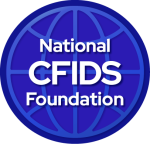Letter Presented to the CFSCC in July 2000
Letter Presented to the CFSCC in July 2000
The following letter was presented to the CFS Coordinating Committee in July. However, only copies of the letter were passed out to the committee and it was not mentioned in any way. The meeting adjourned shortly after the letter was distributed. A news story on this was written by the NCF and was taken by CNN.
July 12, 2000
Dear Committee Members:
When I addressed the last meeting of this Committee on February 8, 2000, I offered six specific recommendations, and likewise, in my written testimony to the Committee at the November 2, 1999 meeting, I made five specific suggestions for improving the performance of the Chronic Fatigue Syndrome Coordinating Committee (see attached testimony). To date, I have received no response.
In a February 8, 2000 letter written to Dr. Satcher, five of the seven appointed members of this Committee state that the patient community views the meetings of this Committee as pointless discussions that lead nowhere. They say that they are shut out, lied to, and treated with hostility-and these are members of this Committee! I am sorry to say that I feel similarly shut out from the process, when my questions and recommendations receive no response.
Now, I have heard that the State of the Science meeting for Chronic Fatigue, scheduled for October 23-24 by the National Institutes of Health, has not one topic on the agenda about the search for a cause and cure for Chronic Fatigue Syndrome. This omission seems to confirm the concerns that have been expressed to me by patients that the Center for Disease Control and the National Institutes of Health have abandoned the search for a cause in favor of the easier task of treating the symptoms of this disease.
If answers to our questions are not forthcoming, it may be time to consider legislative action to create a structure that will better serve the 800,000 Americans who suffer each day from this debilitating illness.
Thank you,
Bob Filner
Member of Congress

